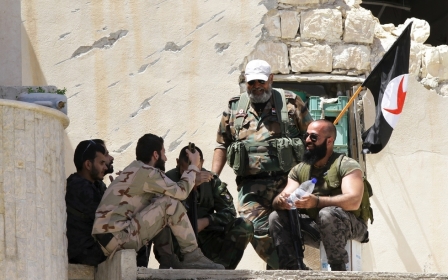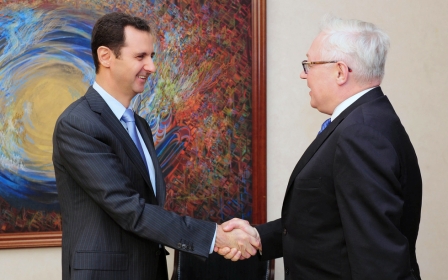Western backers end support for Syrian rebels attempting to seize Daraa

Southern Syria’s mainstream opposition has had – and lost – its last chance at forcing Bashar al-Assad’s troops out of the city of Daraa, according to a source close to opposition backers.
A source who was inside the secretive Military Operations Centre (MOC) in Amman during a meeting this week said the opposition’s American and Jordanian supporters have “closed the folder” on any operation to oust Syrian government forces from the capital of Daraa province. The opposition’s at-times chaotic and inept approach was cited as the primary reason behind backers’ frustration.
The city of Daraa has long been a trouble spot in Syria’s south.
For more than four years, Syrian government forces have held about half of the city where Syrian anti-government uprisings first spiralled into brutal violence back in 2011. The mainly secular opposition, a collection of Free Syrian Army (FSA) brigades including the Southern Front group, has launched a series of offensives on the government’s positions in the city, but each time failed to deliver results.
The most recent offensive, dubbed Operation Southern Storm, began on 25 June. It was planned, equipped and directed by the MOC, which is staffed by senior military figures from 14 countries including the US, Europe and the Arab Gulf. The MOC provides approved rebel groups with weapons, ammunition and salaries for fighters, and in return, the MOC directs the actions of the groups it supports
Speaking anonymously as he is not authorised to discuss MOC proceedings, the source said American and Jordanian backers firmly vetoed any future operations against Daraa. Commanders in the field were notified, he said, and told not to bring the subject up again in the coming months.
"They must have really messed up,” said Washington Institute Syria analyst Andrew Tabler, using a saltier verb.
"This is more bad news for the mainstream opposition at a time when there’s already a lot of bad news, what with Division 30 in the north of the country,” he added, referring to the failure of US-backed rebels to do anything other than get captured and hand over their weaponry shortly after entering northern Syria.
For the 30,000-plus members of the Southern Front, the effective roping off of a long-cherished military goal will be a bitter pill to swallow. The group’s leadership sees Daraa as a symbolic victory, and had hoped that in ruling a post-Assad Daraa, they might prove their civil society bona fides to an international public increasingly sceptical of Syria’s opposition.
But Operation Southern Storm, which started with a whimper and limped on for just over two months, failed to deliver any opposition gains. It also burned through money and ammunition, and resulted in 200 dead FSA fighters. (The Syrian government has not released casualty figures for this battle.)
"This sounds like a setback to the argument of 'let's back the Southern Front and use it as an example for other parts of Syria',” said Tabler. "It also perpetuates the partition between regime, rebels, Islamists and Druze."
A previous offensive launched in February 2014 saw the FSA and some Islamist allies take some ground from government forces. More than a year later, the rift between the mainstream and the Islamists is more pronounced. They no longer share control rooms, and MOC funding is strictly off-limits to Islamist fighters.
The MOC source said many in the mainstream opposition believe Islamist factions in Daraa have conspired against the MOC-sponsored campaign to take the city. Increased enmity between the groups could prove toxic for the only opposition-held stretch of Syria with some modicum of stability.
The Syrian government’s continued presence in the city of Daraa, less than 5km from the Jordanian border, will also scupper any embryonic plans for a safe zone.
For now, the MOC and the groups it supports are turning to other military goals. The Islamic State group has yet to establish an organised presence in Daraa province, but there have been flickerings by sleeper cells. The border between Jordan and this part of Syria is closely monitored through co-operation between the Jordanian military and the FSA on the other side – co-operation that must continue for Jordan’s own security.
"In Syria there are nothing but bad options,” said Tabler.
“The fact is, the moderate opposition hasn't been effective or cohesive, and working with them has severe limitations. But if you don't make relationships with the Sunnis, you leave them open to forming relationships with other groups."
New MEE newsletter: Jerusalem Dispatch
Sign up to get the latest insights and analysis on Israel-Palestine, alongside Turkey Unpacked and other MEE newsletters
Middle East Eye delivers independent and unrivalled coverage and analysis of the Middle East, North Africa and beyond. To learn more about republishing this content and the associated fees, please fill out this form. More about MEE can be found here.




